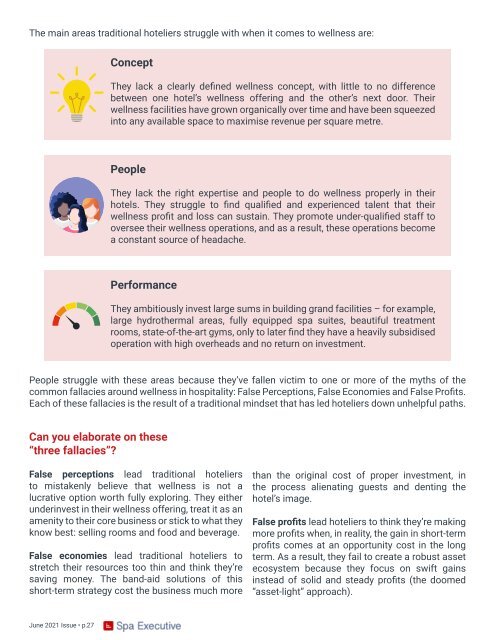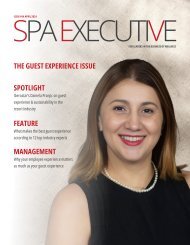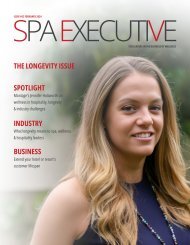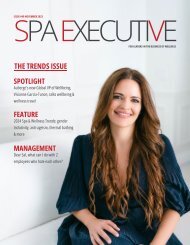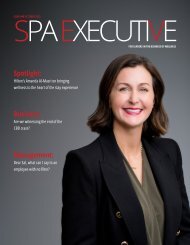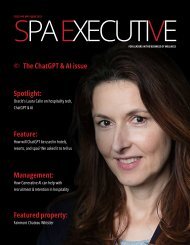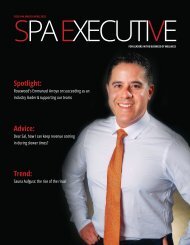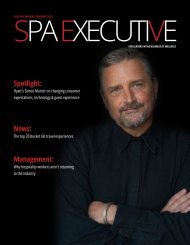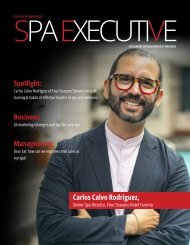Spa Executive June 2021
Create successful ePaper yourself
Turn your PDF publications into a flip-book with our unique Google optimized e-Paper software.
The main areas traditional hoteliers struggle with when it comes to wellness are:<br />
Concept<br />
They lack a clearly defined wellness concept, with little to no difference<br />
between one hotel’s wellness offering and the other’s next door. Their<br />
wellness facilities have grown organically over time and have been squeezed<br />
into any available space to maximise revenue per square metre.<br />
People<br />
They lack the right expertise and people to do wellness properly in their<br />
hotels. They struggle to find qualified and experienced talent that their<br />
wellness profit and loss can sustain. They promote under-qualified staff to<br />
oversee their wellness operations, and as a result, these operations become<br />
a constant source of headache.<br />
Performance<br />
They ambitiously invest large sums in building grand facilities – for example,<br />
large hydrothermal areas, fully equipped spa suites, beautiful treatment<br />
rooms, state-of-the-art gyms, only to later find they have a heavily subsidised<br />
operation with high overheads and no return on investment.<br />
People struggle with these areas because they’ve fallen victim to one or more of the myths of the<br />
common fallacies around wellness in hospitality: False Perceptions, False Economies and False Profits.<br />
Each of these fallacies is the result of a traditional mindset that has led hoteliers down unhelpful paths.<br />
Can you elaborate on these<br />
“three fallacies”?<br />
False perceptions lead traditional hoteliers<br />
to mistakenly believe that wellness is not a<br />
lucrative option worth fully exploring. They either<br />
underinvest in their wellness offering, treat it as an<br />
amenity to their core business or stick to what they<br />
know best: selling rooms and food and beverage.<br />
False economies lead traditional hoteliers to<br />
stretch their resources too thin and think they’re<br />
saving money. The band-aid solutions of this<br />
short-term strategy cost the business much more<br />
than the original cost of proper investment, in<br />
the process alienating guests and denting the<br />
hotel’s image.<br />
False profits lead hoteliers to think they’re making<br />
more profits when, in reality, the gain in short-term<br />
profits comes at an opportunity cost in the long<br />
term. As a result, they fail to create a robust asset<br />
ecosystem because they focus on swift gains<br />
instead of solid and steady profits (the doomed<br />
“asset-light” approach).<br />
<strong>June</strong> <strong>2021</strong> Issue • p. 27


